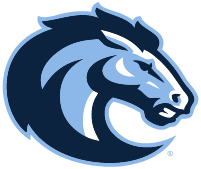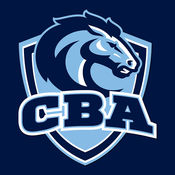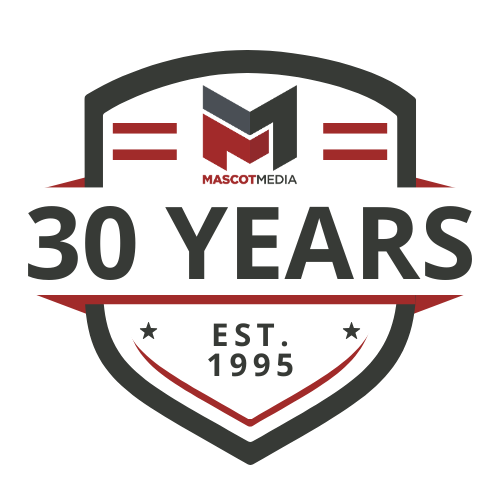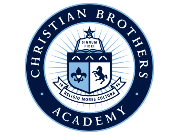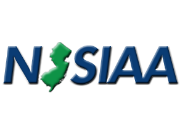CONCUSSIONS
The incidence of a head injury or a concussion in a student-athlete is taken extremely seriously by the Athletic Department, athletic trainers and coaches at Christian Brothers Academy.
It is imperative that all parents/guardians of young athletes be informed about this type of injury, the potential consequences and the procedures in place to protect their children. The following concussion information is a 'must-read' for the parents/guardians of student-athletes.
CONCUSSION POLICY
PREVENTION
- Pre-season baseline testing.
- Review of educational information for student-athletes on prevention of concussions.
- Reinforcement of the importance of early identification and treatment of concussions to improve recovery.
*Student-athletes who are exhibiting the signs or symptoms of a sports-related concussion or other head injuries during practice or competition shall be immediately removed from play and may not return to play that day.
POSSIBLE SIGNS OF CONCUSSION
(Could be observed by Coaches, Licensed Athletic Trainer, School/Team Physician, School Nurse)
- Appears dazed, stunned, or disoriented.
- Forgets plays, or demonstrates short term memory difficulty.
- Exhibits difficulties with balance or coordination.
- Answers questions slowly or inaccurately.
- Loses consciousness.
POSSIBLE SYMPTOMS OF CONCUSSION
(Reported by the student athlete to Coaches, Licensed Athletic Trainer, School/ Team Physician, School Nurse, Parent/ Guardian)
- Headache
- Nausea/Vomiting
- Balance problems or dizziness.
- Double vision or changes in vision.
- Sensitivity to light or sound/noise.
- Feeling sluggish or foggy.
- Difficulty with concentration and short term memory.
- Sleep disturbance.
- Irritability
*Student-Athletes must be evaluated by a physician or licensed health care provider trained in the evaluation and management of concussion to determine the presence or absence of a sports-related concussion or head injuries.
RETURN TO PLAY PROTOCOL
To return to practice and competition the student-athlete must follow the protocol:
- Immediate removal from competition or practice. 911 should be called if there is a deterioration of symptoms, loss of consciousness, or direct neck pain associated with the injury.
- When available the student-athlete should be evaluated by the school’s licensed healthcare provider who is trained in the evaluation and management of concussions.
- School personnel (Athletic Director/Building Administrator, Licensed Athletic Trainer, School Nurse, Coach, etc.) should make contact with the student-athlete’s parent/guardian and inform him/her of the suspected sports-related concussion or head injury.
- School personnel (Athletic Director/ Building Administrator, Licensed Athletic Trainer, School Nurse, Coach, etc.) shall provide the student-athlete with district board of education approved suggestions for management/ medical checklist to provide their parent/guardian and physician or other licensed healthcare professional trained in the evaluation and management of sports related concussions and other head injuries
- The student-athlete must receive written clearance from a physician, trained in the evaluation and management of concussions that states the student-athlete is asymptomatic at rest and may begin the local districts’ graduated return-to-play protocol. Medical clearance that is inconsistent with district, charter, and non-public school policy may not be accepted and such matters will be referred to the school/team physician.
GRADUATED RETURN TO COMPETITION AND PRACTICE PROTOCOL
- Complete physical, cognitive, emotional, and social rest is advised while the student-athlete is experiencing symptoms and signs of a sports-related concussion or other head injury. (Minimize mental exertion, limiting overstimulation, multi-tasking etc.)
- After written medical clearance is given by a physician trained in the evaluation and management of concussions stating that the student-athlete is asymptomatic at rest, the student-athlete may begin a graduated individualized return-to-play protocol supervised by a licensed athletic trainer, school/team physician or in cases where the afore mentioned are not available a physician or licensed health care provider trained in the evaluation and management of sports-related concussions. The following steps should be followed:
- Completion of a full day of normal cognitive activities (school day, studying for tests, watching practice, interacting with peers) without re-emergence of any signs or symptoms. If no return of symptoms, next day advance to:
- Light aerobic exercise, which includes walking, swimming, or stationary cycling, keeping the intensity < 70% maximum percentage heart rate: no resistance training. The objective of this step is increased heart rate. If no return of symptoms, next day advance to:
- Sport-specific exercise including skating, and/or running; no head impact activities. The objective of this step is to add movement and continue to increase heart rate. If no return of symptoms, next day advance to:
- Non-contact training drills (e.g., passing drills). The student-athlete may initiate progressive resistance training. If no return of symptoms, next day advance to:
- Following medical clearance (consultation between school health care personnel, i.e., Licensed Athletic Trainer, School/Team Physician, School Nurse and student-athlete’s physician), participation in normal training activities. The objective of this step is to restore confidence and to assess functional skills by the coaching staff. If no return of symptoms, next day advance to:
- Return to play involving normal exertion or game activity.
- Utilization of available tools such as symptom checklists, baseline and balance testing are suggested.
- If the student athlete exhibits a re-emergence of any concussion signs or symptoms once they return to physical activity, he/she will be removed from further exertional activities and returned to his/her school/team physician or primary care physician.
- If concussion symptoms reoccur during the graduated return-to-play protocol, the student-athlete will return to the previous level of activity that caused no symptoms.
TEMPORARY ACCOMMODATIONS FOR STUDENT-ATHLETES WITH SPORTS-RELATED HEAD INJURIES
- Rest is the best “medicine” for healing concussions or other head injuries. The concussed brain is affected in many functional aspects as a result of the injury. Memory, attention span, concentration and speed of processing significantly impacts learning. Further, exposing the concussed student-athlete to the stimulating school environment may delay the resolution of symptoms needed for recovery.
- Accordingly, consideration of the cognitive effects in returning to the classroom is also an important part of the treatment of sports-related concussions and head injuries. Athletes that need accommodations must have written documentation from the treating physician.
- Mental exertion increases the symptoms from concussions and affects recovery. To recover, cognitive rest is just as important as physical rest. Reading, studying, computer usage, testing, texting – even watching movies if a student is sensitive to light/sound – can slow a student's recovery. In accordance with the Centers for Disease Control's toolkit on managing concussions schools may look to address the student’s cognitive needs in the following ways
Students who return to school after a concussion may need to:
- Take rest breaks as needed.
- Spend fewer hours at school.
- Be given more time to take tests or complete assignments. (All courses should be considered)
- Receive help with schoolwork.
- Reduce time spent on the computer, reading, and writing.
- Be granted early dismissal to avoid crowded hallways.
